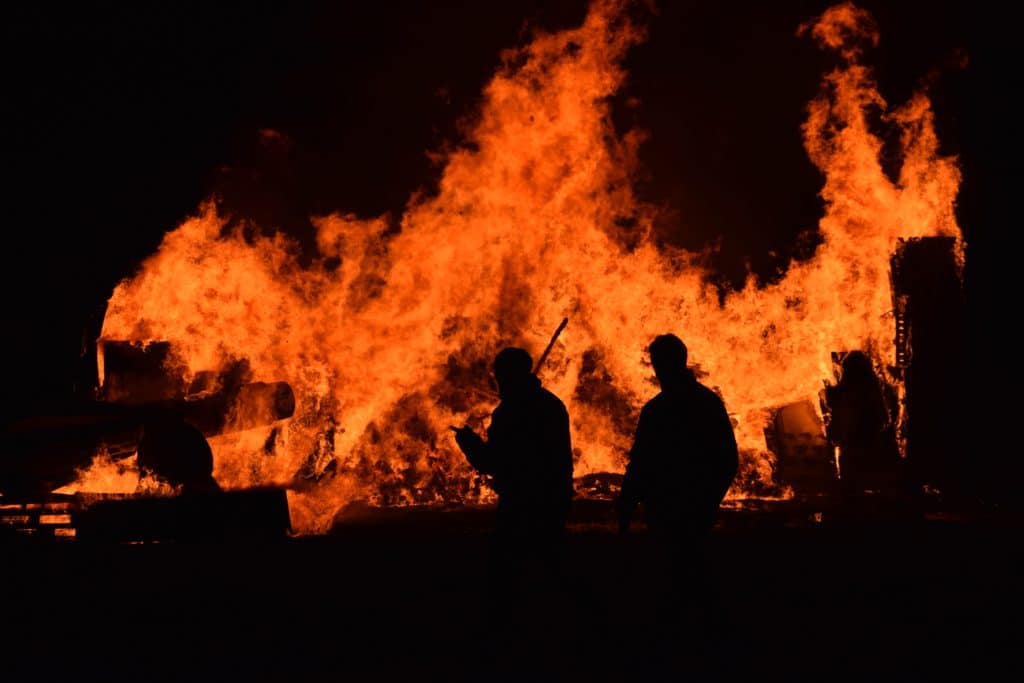Wildfires, whether caused by nature, human malice or negligence, are becoming more common every year. Wildfire prepping couldn’t be more important. Climate change is making regions hotter and drier, creating the perfect environment for a single spark to erupt into a massive blaze. The last couple of years have brought us the deadliest wildfires the U.S. has ever seen, and it may only worsen from here.
While wildfires can move fast and erratically, you generally have some time to escape if one is coming your way — as long as you’ve taken the time to prepare. What do you need to know if there’s a wildfire threatening your home?
Know Your Risks
First, you need to know and understand your wildfire risks. This will vary dramatically depending on the time of year, your location and several other variables. If you own your property, talk to your homeowner’s insurance company. It may have a wildfire risk number on file for your property. You may find it difficult to obtain an insurance policy if the risk is too high in your area.
This step is no different than understanding your flood risk. Forewarned is forearmed, and knowing the chances of losing your home to a wildfire can help you take the necessary steps to prepare.
Build Smart
This step starts before you ever break ground on your home. If you’re building a new house in a high-risk area, choose your building materials carefully. Use materials that will prevent your home from going up in flames if a stray ember lands on the roof or gets pulled in through a window or vent. They won’t stop a fire from devouring your home if it is in the blaze’s direct path, but it can help protect your investment in the case of a near miss.
If you have an existing home, consider retrofitting the property to reduce your risk. This includes re-roofing with ember-resistant materials, covering vents with metal mesh to prevent cinders from getting pulled into the ventilation system and taking other steps to make your house fire-resistant.
Remove Any Fuel
Your next step will take a bit of elbow grease and manual labor. Fire will follow the easiest path that provides it with sufficient fuel to continue burning, so be sure to interrupt its flow by removing any fuel on your property. This is known as creating a firebreak. This defensible space keeps the flames from following dry grass and brush to your home.
You’ll need to clear out the vegetation in a space between 30 and 100 feet from your home or anything else you want to protect from the flames. You’ll need more space if the area around your property is sloped or if you live in wildfire-prone areas like Northern California.
While a firebreak might discourage flames from climbing your walls, it doesn’t do anything to protect your home from flying embers, so keep that in mind when you’re preparing. Be aware of home features like a wooden roof, wooden walkways and decks or piles of firewood next to your home. These things can be especially vulnerable to flying embers, so plan for how you’ll protect or even remove these features.
Stay Informed
Information is your best resource during fire season, especially in places where you can see the smoke for miles but might not have the best idea of where the blaze is. Stay informed and follow any updates as they come through. Emergency services will update you multiple times throughout the day with details like the size of the fire, how much of it is contained, and where it might spread to next.
Pay attention to any evacuation orders. They can change and shift very quickly, depending on how fast the fire spreads, so you might only have a few minutes to change from “ride it out” to “time to run.” Social media and online news resources are useful, but if the fire damages cell towers or takes out the internet and power, radios are also an invaluable tool for staying informed.
Stock up on Wildfire Prepping Supplies
You will need supplies, whether you can stay safely in your home or have to evacuate. Going to the grocery store won’t be an option until the fire is out and things start to return to normal, so you’ll want to make sure you have everything you need on hand. Backpacks are made to be easy to carry, so buy a few durable ones for each person in your household in case you’ll need to evacuate. Store food and water in portable containers like coolers to make these goods easier to transport.
Your wildfire prepping supply list should include but not be limited to:
- Nonperishable food
- 1 gallon of water per person per day
- First-aid supplies
- OTC and prescription medicine
- Important paperwork
- Clothing
- Extra shoes
- Cash
- Pet supplies
You want to have enough supplies to be self-sustaining for at least three days. Ideally, you’ll have enough for up to two weeks, but it can take a while to get that kind of stash together.
Be Ready to Run
You can ride out several natural disasters in your home, from earthquakes to tornadoes to hurricanes, depending on where you live. Wildfires aren’t one of those events. If there is a wildfire coming your way, your only choice is to evacuate or die. There is no middle ground. If you have to leave, be ready to run.
Having a trailer loaded with your supplies and the sentimental objects you can’t stand to lose is a good way to be prepared. All you need to do is hitch up your trailer and go as soon as the evacuation order is issued.
Make sure your trailer is in good shape before fire season starts. Dirt can be a surprisingly major factor in causing other maintenance issues, so always keep your trailer clean — but avoid harsh tools like pressure washers. The last thing you need is to lose all your supplies because a bearing decided to give out with the flames lapping at your heels. The same rule applies to your vehicles. Don’t leave yourself stranded with an unreliable car, because you won’t be able to outrun the fire on foot.
Plan Your Evacuation Routes
Do you know where to go if a fire threatens your home? What if the wildfire cuts off your primary evacuation route? Before you need it, plan and practice your escape. It’s often difficult to predict where a fire might spread, and your main course can easily end up cut off by a swiftly spreading wildfire. Leave yourself some alternatives so you can get away safely.
Once you have the routes planned, practice taking them. Hook up your trailer and drive. Note places where there are trees and brush near the road because if they catch fire, it could create problems for your plan.
It sounds simple or perhaps tedious, but it could potentially save your life. You won’t have much time to plan once the fires are spreading, so practicing your evac routes turns them into muscle memory. Even if you’re terrified of the flames, you instinctually remember where to go to reach safety.
Invest in Wildfire Insurance
If you live in an area prone to wildfires, homeowner’s insurance is a must. When you start shopping around for a policy, make sure you read the fine print to ensure you’re covered in the event of a wildfire. Not every policy will cover fire damage, or if it does, payments will be limited to internal house fires rather than external wildfires.
If you’re in a high-risk area, you may find it difficult to obtain the necessary insurance, but keep trying. There will always be options, even if they’re a little more costly than you expected. Paying a little bit more on your premiums will still cost less than rebuilding or replacing your home entirely out of pocket.

If You’re Told to Leave, Go
This should be common sense, but it’s often overlooked. If there’s an evacuation order issued or you’re told to leave, go. Don’t sit around and wait to see if the fire might alter its path. Don’t spend precious minutes trying to pack up every single sentimental trinket in your home. Throw your family and your pets in the car, hook up your trailer of supplies if you have one and leave.
Emergency services don’t issue evacuation orders arbitrarily. If they tell you to leave, it’s because your life is in danger. Don’t goof around and waste time.
Preparation Can Save Your Life
Wildfires are a part of life for people in many parts of the world. Don’t let them take you by surprise. A bit of wildfire prepping can save your life and make it easier to rebuild if the worst happens and a fire takes your home. Remember that no matter what happens, your house and everything in it is replaceable. Your life and the lives of your family members are not. Don’t take anything for granted and be ready for wildfires no matter where you live.











